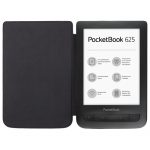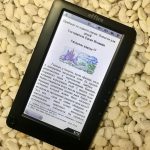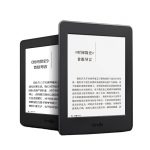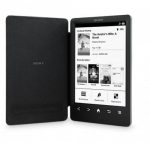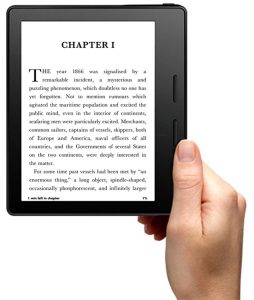 E-books - a digital gadget that is gaining popularity among its "colleagues" in the consumer market of advanced technologies. If earlier the device’s functionality was limited to reading or using it for work, then modern models are supplied by manufacturers with the functions necessary for an advanced user.
E-books - a digital gadget that is gaining popularity among its "colleagues" in the consumer market of advanced technologies. If earlier the device’s functionality was limited to reading or using it for work, then modern models are supplied by manufacturers with the functions necessary for an advanced user.
Most reading gadgets today provide their owners with extensive opportunities from accessing the Internet, both using Wi-Fi and using the options of a mobile operator, to watching popular films on a high-quality color touch screen without harming the eyes. Is it worth buying an e-book today in the era of smartphones that can replace almost any electronic device? What are its advantages? What features is best to buy a gadget so that it can satisfy the basic needs of the user as much as possible? And also what devices are included in the rating of “quality standards” according to experts? You can find answers to these and other questions here in the article below.
Content
What is an e-book?
In order to understand whether it is advisable to purchase a gadget for reading, you need to understand how it works. The principle of the electronic book is to display the "encoded" text on the screen. Despite the fact that some manufacturers still supply readers with LCD screens to the consumer market, the most popular among buyers now are devices with displays made using electronic paper or electronic ink (E-Ink).
In accordance with this technology, the design of the gadget's screen involves the presence of microcapsules, which, in turn, consist of black (negatively charged) or white (positively charged) microgranules. As a result of exposure to the electric field arising from the operation of the device, black or white particles “float” to the surface of the display, responding to the corresponding electric charge. Thus, the capsules that make up the display are painted in the appropriate color, projecting the “encoded” source text or image of the file. The described principle of operation allows you to save battery power as much as possible, spending energy exclusively when a new “picture” is displayed on the book screen.
When we choose an e-book, it is necessary to remember the significant differences among the types of products in this segment. The main difference is the display technology. It depends on the screen production method and the materials used for this purpose, whether the reader will be budget or “luxury”, the most reliable or subject to mechanical stress, comfortable for the eyes of even an elderly person or with the usual “flickering” backlight. By type of device, the classification includes:
- E-Ink (electronic paper);
- TFT (liquid crystal screen).
Devices with an E-Ink display are a “reader” that is as close as possible to a paper book in its characteristics. In the process of reading, you can look at it for a long time and intently, without worrying about the negative consequences for vision. Traditionally, manufacturers release it on store shelves without a “blinking” backlight, keeping the eyes of readers of devices with LCD screens in suspense. Until recently, the main disadvantage of this type of electronic reader was the lack of a color screen. Firms involved in the production of electronic books, rightfully considered the best in their segment, have begun work on improving their product. Now the buyer can choose a “color novelty” that transfers the basic tones of the source file to the display.
TFT-gadgets in comparison with E-Ink-devices are considered inexpensive, but clearly inferior to them in technical parameters.Choosing a good book for "electronic" reading, the user is likely to come across the names of the technologies of its production that are most often found on the modern electronics market: MVA / PVA, IPS, OLED / AMOLED. All of these types have good viewing angles when reading, contrasting color screens, the ability to play movies, videos and so on. However, with all the advantages, they have a significant drawback - backlight. Is it needed in principle? If your goal is to choose the best e-book safe in every sense, the answer is obvious - no.
When analyzing a large assortment of presented "readers" in order to find a product "ideal" for themselves, it is advisable to pay attention to what formats they support. The most popular text document extensions are:
- FB2 (FictionBook);
- EPUB (Electronic PUBlishing);
- MOBI
- Txt;
- Djvu;
- RTF (Rich Text Format);
- Doc
Being inextricably linked with the regular release of updated models of smartphones and tablets, reader manufacturers are forced to equip their devices with the ability to "read" not only text documents, but also pictures, music, archives and so on. Given this fact, when we choose a high-quality e-book, we will be able to avoid bewilderment and questions when we discover the following file formats available for working on the “reader”:
- JPEG
- BMP;
- TIFF;
- PNG;
- HTML
- CHM;
- MP3
- ZIP.
How to choose
Knowing the differences between the types of electronic books and the possible formats supported by it, the selection of an appropriate device, especially for a novice user, can still cause some difficulties. To facilitate the task, a list of the main technical (and not only) characteristics that deserve special attention when the question arises is how to choose a high-quality e-book.
- Display size. The diagonal of the screen of the reader, like the diagonal of any other electronic gadget, is extremely important in view of the direct dependence of comfort in using the device on its size and, as a result, the size of the device itself. Today, the buyer is presented with a diagonal of 4 to 10 inches. It is important to remember that the smaller the product, the easier and more compact the design of the “virtual” book will be, but the stronger the tension for the eyes. The best option would be an electronic reader with a display diagonal of 6-7 inches. This value is sufficient for comfortable long reading, and for convenient transportation of the device in a bag or pocket.
- Screen type. In choosing a gadget according to the type of screen, it is worth giving preference to books that are closest in their characteristics to book carriers. We are talking about e-books with E-Ink displays. Despite the lack of backlight available on LCD readers, devices based on electronic paper are as safe as possible for the reader. But is this not the main thing? Moreover, when using this type of screen, the battery consumption is significantly reduced, which also cannot be attributed to the advantages.
- Screen resolution. This technical parameter is responsible for the image quality on the device. Accordingly, the higher it is, the more clear and high-quality the letters on the screen of the electronic reader will be. Based on this, it is important to adhere to the basic rule: the larger the screen size of the device, the greater the resolution. So, an extension of 1024 * 768 pixels will be ideal for a 7-10 inch gadget; and for 4-6 inches - 800 * 600.
- Backlight. The presence of artificial lighting "reader" significantly increases the damage to the user's vision caused by its use. And the price, as a rule, is even several times higher for mini-books with backlighting than for “dark” analogues. Accordingly, there is no need for its availability, as such. If you need to use an electronic reader in the dark, it is worth considering the option of buying an additional flashlight, mounted on a protective case of the device.
- Memory. Manufacturers provide one or another volume of the device’s internal memory designed to store downloaded files. The most popular are “readers” with a “storage” size of 4 or 8 GB.These indicators are enough to download more than 3 thousand e-books. If there is a lack of built-in volume, the user can use the memory card slot provided on the vast majority of models (up to 32 GB).
- Interfaces The main interfaces, the presence of which will not be superfluous on the selected device, are a slot for a microSD memory card, a connector for USB or MicroUSB cable, a headphone jack. It is important to keep in mind that when buying an e-book with the ability to use wi-fi, you can not pay attention to the presence of a connector for the wire.
- Battery capacity. The ideal choice, according to this criterion, would be devices that have passed the test of "survivability". The larger the battery capacity indicator, the more “tenacious” the device will be, which means that the need to charge it without the possibility of use will be a rare “nuisance”. The optimal indicator of battery capacity is considered to be 1000 - 1500 mAh.
- Formats Choosing the model of "readers" among those in the "top" according to the buyer, do not focus on the maximum number of acceptable formats. It is enough to make sure that there are the most popular among them: PDF, EPUB, FB2, TXT, DJVU, RTF, HTML, DOC (X), JPEG, BMP, GIF and MP3, AAC, in case of audio output. If you need to use an “inaccessible” permission, we recommend using a converter.
- Control. It is advisable to give preference to touch devices in the matter of control. In addition to the absence of the existing risk of losing the stylus (a plastic “stick” for interacting with a non-touch display), thus remaining without a “control lever”, touching with your fingers will provide greater accuracy in working with the gadget.
Top models
PocketBook 614 Plus

- Display Type: E-Ink Carta
- The presence of a sensor: yes
- Screen Feature: 6 inch
- Weight: 170g
- Processor Specifications: 1000 MHz
- RAM capacity: 256 Mb
- The amount of internal memory: 8 GB
- Memory card slot: yes
- Formats that can be played on the device: TXT, DOC, PDF, fb2, ePub, DjVu, RTF, MOBI, JPEG, BMP, TIFF, PNG, HTML, CHM, ZIP
- Battery capacity: 1300 mAh
- Additional options provided by the manufacturer: page turning buttons
- quality assembly
- long battery life
- convenient location of function buttons
- insufficient screen quality
- lack of built-in backlight
- lack of audio output
- lack of wifi module
Digma r63s

- Display Type: E-Ink Carta
- The presence of a sensor: no
- Screen Feature: 6 inch
- Weight: 160g
- Processor Specifications: 600 MHz
- RAM capacity: 256 Mb
- The amount of internal memory: 4 GB
- Memory card slot: yes
- Formats that can be played on the device: TXT, DOC, PalmDOC, PDF, fb2, ePub, DjVu, RTF, mobi, JPEG, BMP, GIF, PNG, HTML, CHM, ZIP
- Battery capacity: 1500 mAh
- Additional functions: paging buttons, built-in display backlight
- convenience of function buttons
- low cost
- a large number of supported formats
- low-quality backlight
- lack of sensor
ONYX BOOX Robinson Crusoe
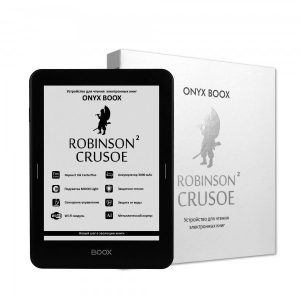
- Screen Type: E-Ink, Touch
- Display size: 6 inches
- Weight: 205g
- CPU Frequency: 1000 MHz
- RAM: 512 MB
- Built-in memory: 8 GB
- Memory card slot: yes
- Supported formats: TXT, DOC, PalmDOC, PDF, fb2, ePub, DjVu, RTF, MOBI, PRC, JPEG, BMP, GIF, PNG, HTML, CHM, ZIP
- Battery Capacity: 3000 mAh
- Additional functions: Wi-Fi module, Bluetooth, page turning buttons on the case, water resistance
- long battery life
- resistance to mechanical damage
- water resistant
- compactness
- comfortable brightness level
- inconvenient location of function buttons
- lack of software updates
- lack of audio output
Amazon Kindle 8
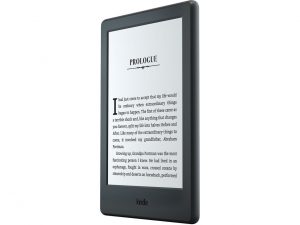
- Screen Type: E-Ink, Touch
- Screen size: 6 inches
- Supported formats: TXT, PDF, AZW3, AZW, MOBI, PRC, HTML, DOC, DOCX, JPEG, GIF, PNG, BMP
- Built-in memory: 4 GB
- Memory card slot: no
- Weight: 213g
- Additional functions: built-in Wi-Fi module, Bluetooth
- long battery life
- ease of interaction with the sensor
- eye comfort with prolonged use
- affordable cost
- wifi module
- little weight
- lack of display backlight
- maintaining a limited number of document formats
Gmini MagicBook M5
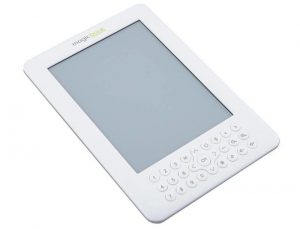
- Screen Type: E-Ink Vizplex
- Screen size: 5 inches
- Supported formats: TXT, PDF, fb2, ePub, RTF, JPEG, BMP, GIF, PNG, MP3, HTML
- RAM: 128 MB
- Memory card slot: yes
- Battery capacity: 1100 mAh
- CPU Frequency: 400 MHz
- Weight: 150g
- Additional functions: automatic screen rotation, the presence of an FM tuner
- availability of a cover as standard
- build quality
- audio output
- "Recognition" of a large number of formats
- inconvenient function buttons
- body material
Now, knowing the nuances of choosing e-books, their basic technical parameters, even a “novice reader” will be able to competently choose a gadget “to their liking”, not being afraid to be disappointed after buying a “their dream” reader.

